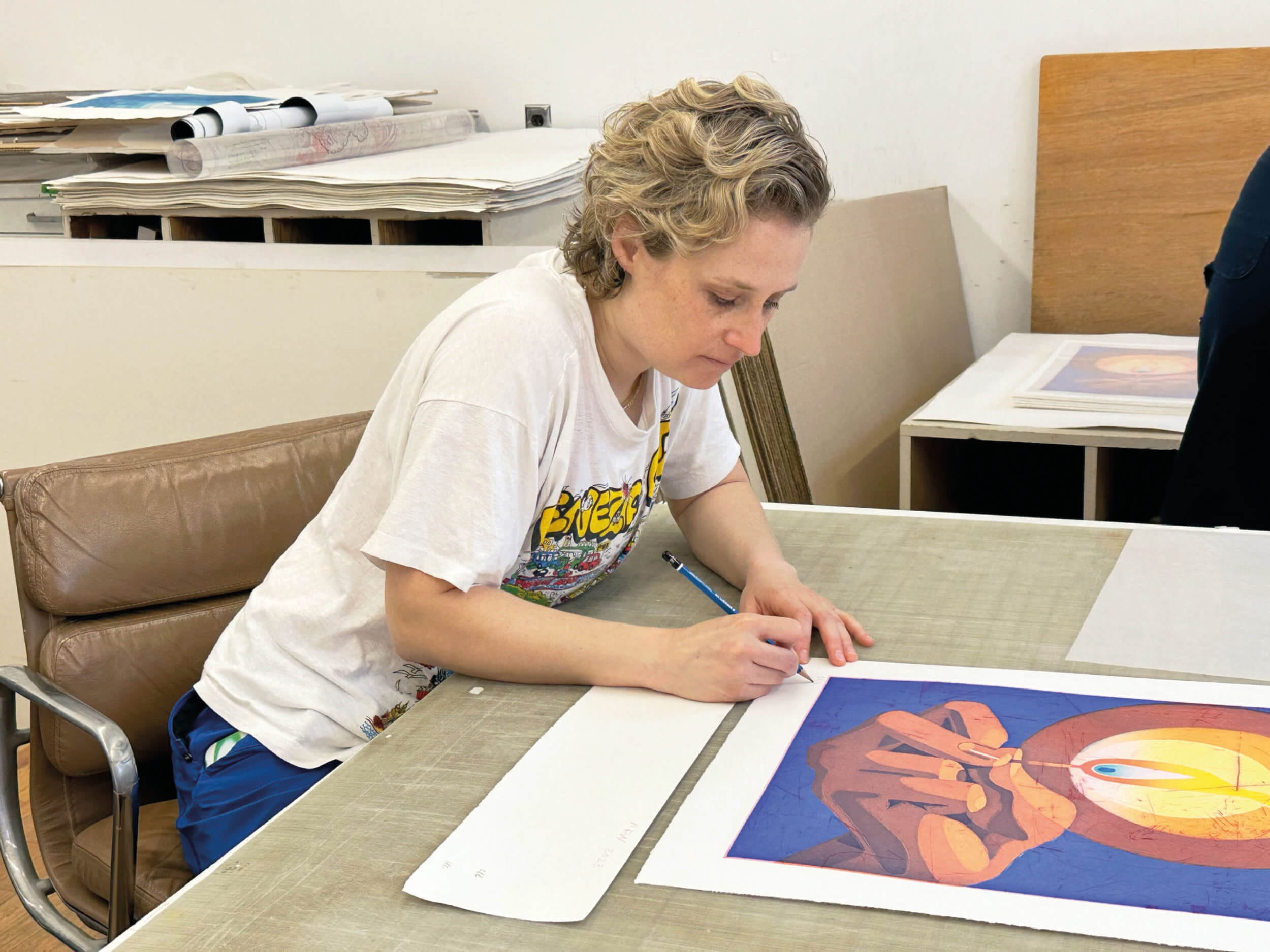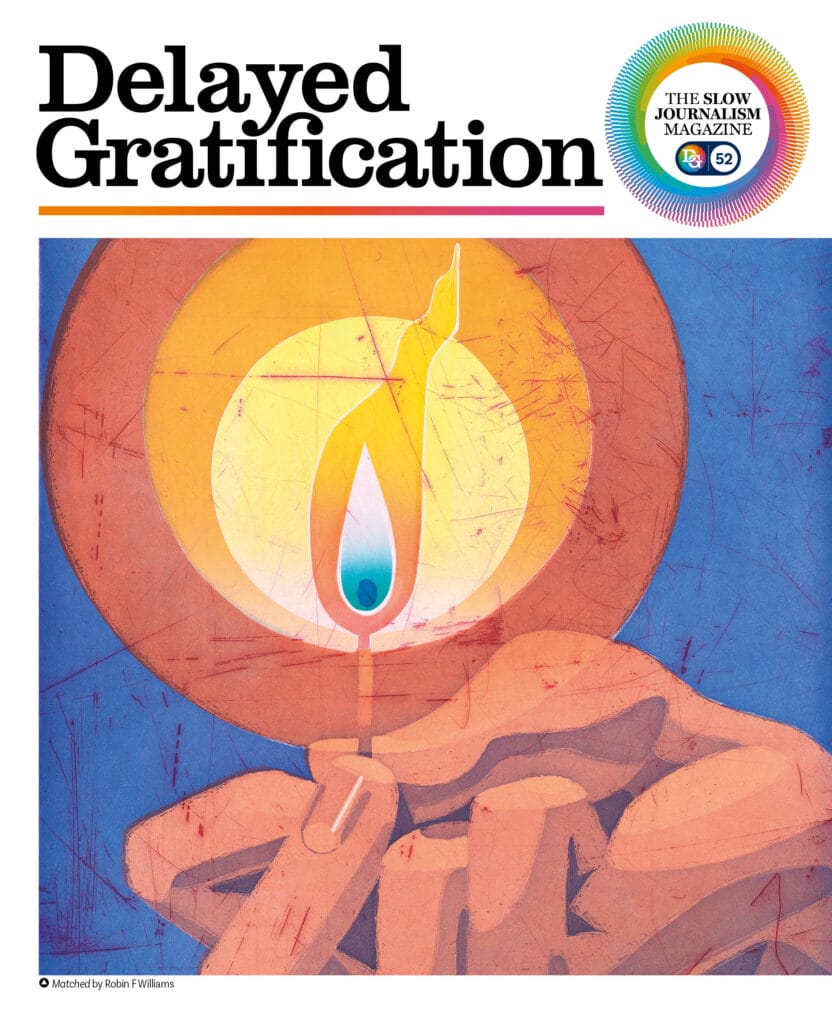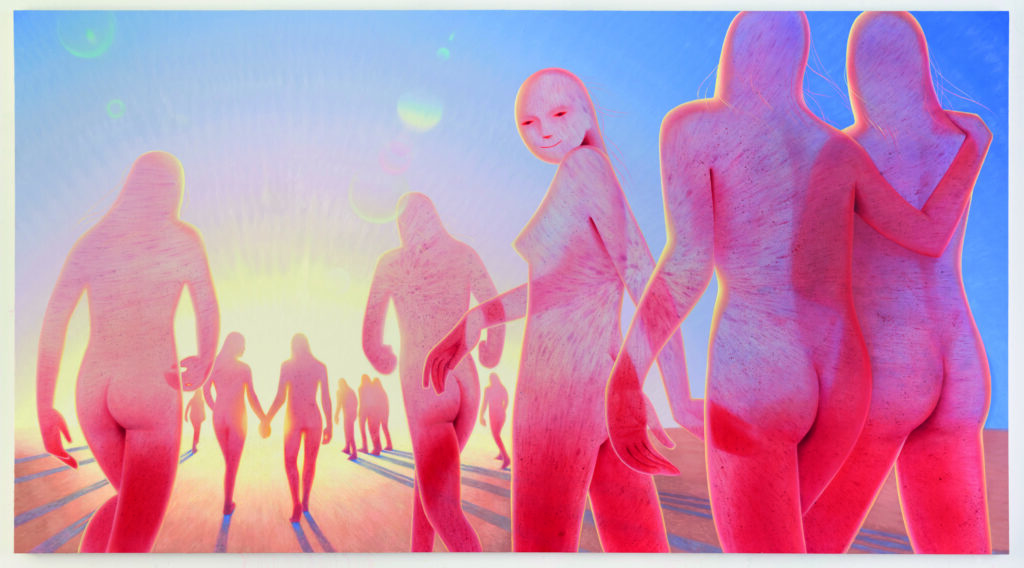On the cover: Robin F Williams interview

Robin F. Williams signing the edition of her print "Matched."
Our cover art for the new issue of Delayed Gratification is Matched by artist Robin F Williams. Robin is a New York-based artist known for her large-scale paintings of female figures. In November 2023 she partnered with New York gallery and art dealer Pace Prints to release Matched, with the proceeds going to Fair Fight, the Georgia-based voting rights organisation set up by Democratic political leader Stacey Abrams.
What does the flame in Matched represent?
I hope it holds multiple interpretations. To me, it signifies urgency and solemnity. Starting a fire with a match requires precision, care and timing. It’s an individual action with the potential for a profound impact.
What can you tell us about the creation of Matched?
Pace Prints has been an incredible creative partner, assisting me in translating my painting practice into printmaking while supporting the causes that matter to me. Matched was released to benefit Fair Fight. I find this method of supporting organisations or causes more meaningful than contributing existing work to auctions. It allows me to create artwork that directly engages with the issues I care about.
Why did you choose that cause?
I was born and raised in Ohio. Much like the rest of the country, Ohio has a significant majority of black voters who are registered as Democrats. For the last several election cycles, the state has been locked in conflict over heavily gerrymandered districts, which shifted this swing state to be decidedly Republican. The persistent history of voter suppression against black communities seems so relentless and sinister that it’s easy to lose hope for change. Stacey Abrams gives me a lot of hope, and I wanted to support the work she is doing.

You are a founding member of Artists Commit. Can you tell me more about that organisation?
It is an artist-led collective committed to a climate-conscious, resilient and equitable future. Currently our focus is on assisting artists in creating climate impact reports, personal studies of an exhibition’s carbon footprint, to empower climate-conscious practices in their studios and exhibitions. We hope this is a step toward shifting the culture across the entire art sector, starting with artists and workers.
Can art make a difference to huge problems such as the electoral system and climate change?
Yes. On a personal level, I know that art is essential for coping with existential fears. While I don’t expect artists to single-handedly solve all the world’s problems, I do believe that art-making is our fundamental human birthright. It’s a check on fascism and other systems of oppression. It’s one of many tools we have at our disposal for keeping us alive, engaged and resilient.

Tears on Screen by Robin F Williams (Courtesy of Robin F. Williams; Morán Morán, Mexico City; and P·P·O·W, New York)
How did you begin your career?
I graduated from art school with an illustration degree just as print was dying and the Great Recession began. I painted for about 12 years without making a living from my work. I applied to MFA programs and was rejected. I worked various jobs, including illustrating Harry Potter colouring books and teaching painting to college students. When I was 30, I was fired from a restaurant movie theatre because I was terrible at waiting tables in the dark. I was with PPOW Gallery in New York for about eight years before I received a favourable review in the New York Times. I’m grateful to my gallery for sticking with me and giving me the platform to receive that review. People started to notice my work, which really changed my whole life.
Which of your works are you particularly proud of?
I’m very proud of the painting Final Girl Exodus, which is part of the permanent collection at the Columbus Museum of Art. It’s especially rewarding to have my work on display in my hometown museum.

Final Girl Exodus by Robin F Williams (Courtesy of Robin F. Williams and P·P·O·W, New York)
What news story between July and September particularly grabbed your attention and why?
I took a special interest in the writer’s strike. My sister-in-law served as a strike captain for the writers picketing Warner Bros., and I had other friends in the union. A lot of news coverage focused on the role of AI in the negotiations. I was more focused on the larger implications for other union efforts across the country. The domino effects their strike has had are very inspiring. I’m proud and grateful that the writers were willing to hold out for the terms they deserved. This speaks to your earlier question as to whether art can make a difference. Art connects us to our dignity and worthiness. It doesn’t surprise me that workers in a creative field were able to rally so much support and make real change.
Delayed Gratification #52, featuringRobin F Williams’s art on the cover, is available now from our online shop.
A limited number of prints of Matched are available via paceprints.com. Williams has exhibitions in the Columbus Museum of Art, New York and Tokyo scheduled for April 2024. For details see robinfwilliams.com
Slow Journalism in your inbox, plus infographics, offers and more: sign up for the free DG newsletter. Sign me up
Thanks for signing up.





